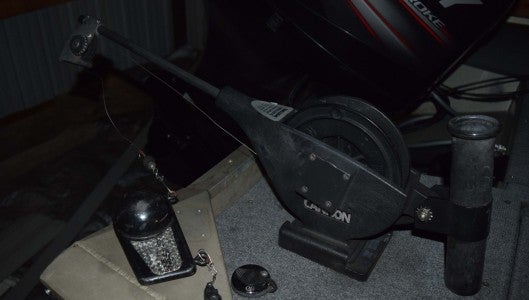Learning the basics of trolling, Part II
Published 10:00 pm Wednesday, September 2, 2015
In my last column we looked at trolling, and specifically flat line and planer board trolling. Today let’s look at down riggers, lead core line and Dipsey Divers.
Downriggers are very popular among those who fish for trout in reservoirs, offshore saltwater fishermen, and walleye fishermen. The common denominator in these is fishing deep. While downriggers can be fished as shallow as you would like to fish, the main purpose of a downrigger is to fish deeper than is practical with other methods.
A downrigger looks like a small crane mounted on the side or back of a boat and it has a weight measured in pounds attached to thin diameter steel cable. This weight has a clip attached to it that functions much like a clothes pin, this clip holds your fishing line and when the downrigger is released, pulls your line almost straight down as you troll.
This allows you to fish very deep depths without a huge amount of line out. Typically you would have somewhere between 10 and 60 feet of line tagging behind the downrigger weight.
A fiberglass rod is ideal for downrigger use, as you can crank the tension on the rod so when you get a strike, the light action rod swings up to take some of the slack up. The tricky part is getting the clip tension set right. If its too loose, the line will pop out on its own. If it’s too tight, you can actually drag a fish for miles without knowing you have a fish on. Trial and error is the best teacher here.
Another method of trolling deeper depths is leadcore line. This line is basically a lead rope on the inside with a braided Dacron line on the outside. The weight of the line pulls your bait down with the more line you let out. The line is color coded so you can keep track of your depth, generally speaking each color takes your bait down five feet, and each color is 30 feet long. This is not exact science as the speed, lure type, etc. will affect the depth.
A leader is attached to the lead core so you are not tying a brightly colored “rope” to your lure. I like a leader of 10-15 feet. Leadcore has an advantage over flat line trolling in turns. Flat lines will cut thru the water making turns much wider and more susceptible to tangling. Leadcore tracks much like the boat path reducing tangles and is better to troll contours with.
Leadcore is most practical for fishing depths less than 25 feet. Fiberglass rods with large spool reels are ideal for leadcore. It also has a pretty long life; I have been using my same leadcore for many years.
I don’t have any experience with Dipsey Diver or Jet divers, but they are used to fish depths up to 70 feet. They are varied in size, and are basically a disc that causes the bait to plane down sharply. It’s like an exaggerated lip on a crankbait. You attach your line to them, then attach a leader behind. The diver “trips” when a fish strikes taking away the planing angle allowing you to reel the fish up. Reels with line counters are a must, as the amount of line out controls the depth. They are a cheaper alternative to downriggers, but my opinion is a downrigger is easier to use.
Trolling is a very effective way to catch fish. But there is more to effective trolling than simply pulling a lure behind your boat. Experience is the best teacher, just be observant when you get bit and when you don’t.



